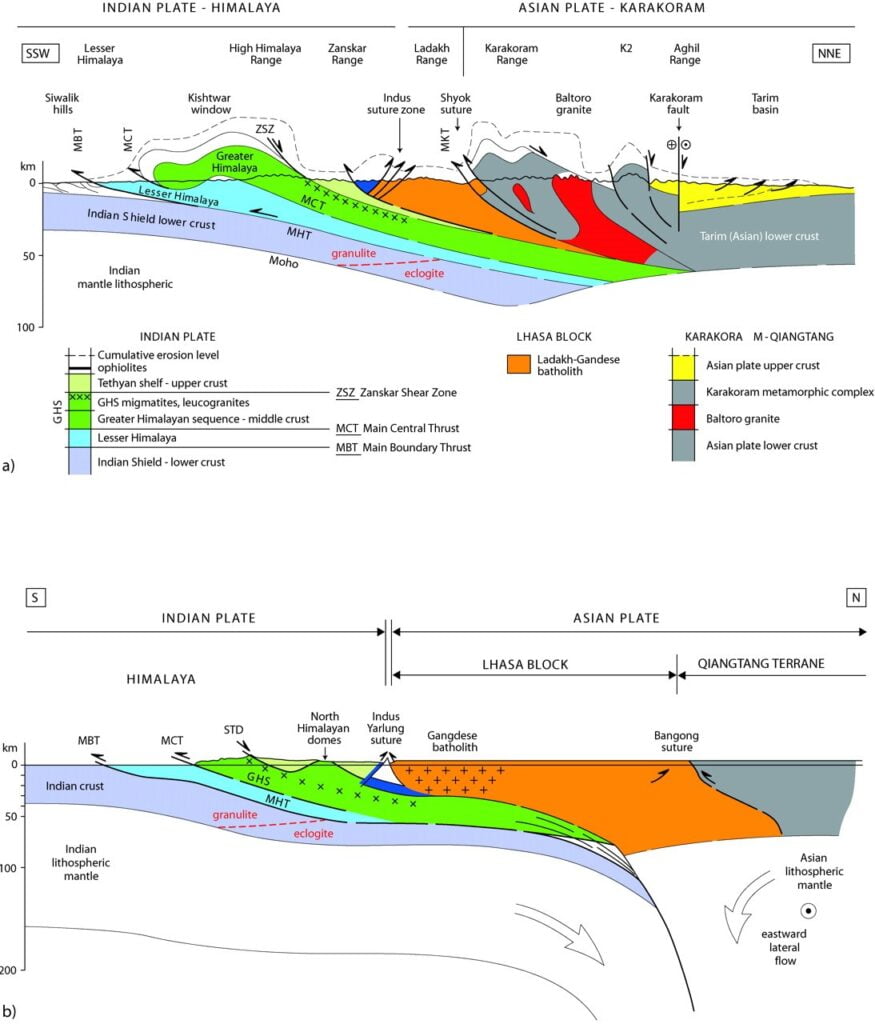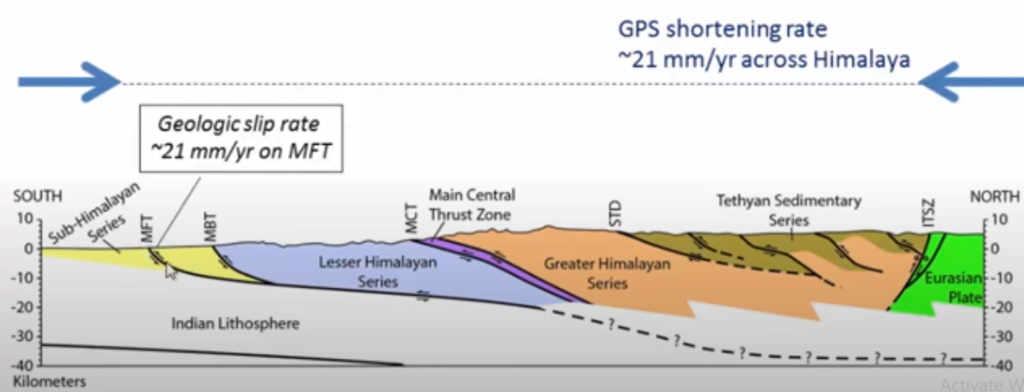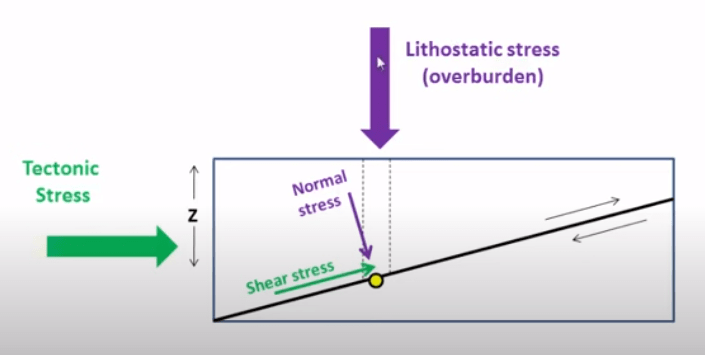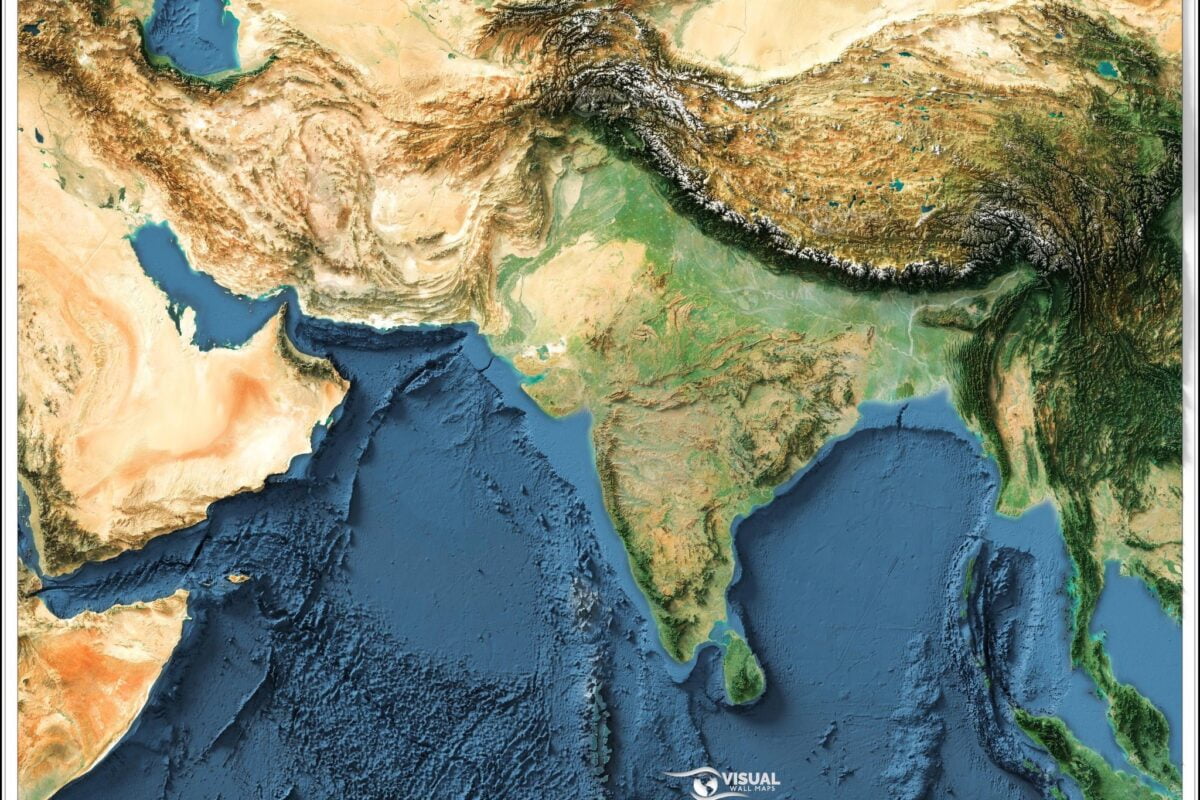The collision between the Eurasian and Indian plates is one of the most significant geological events shaping our planet’s landscape. This monumental collision, offers profound insights into the shape, size, and dynamics of tectonic plates. Understanding how India slides beneath Eurasia, the formation of critical faults, and the resulting seismic activity provides a window into the intricate processes that shape our mountains and drive earthquakes.
The Mechanics of Plate Collision
Approximately 50 million years ago, the Indian plate began its northward journey towards the Eurasian plate at a rapid pace of several centimeters per year. The convergence of these two massive plates led to the subduction of the Indian plate beneath the Eurasian plate. This subduction process involves the Indian plate being thrust underneath Eurasia, causing the overlying sediments to scrape off and accumulate, forming a wedge-shaped zone of deformed material known as an accretionary wedge.
Fault Systems and Shortening Accommodation
The Indian-Eurasian collision is characterized by a series of major thrust faults that accommodate the shortening of the Earth’s crust. Among these, the Main Frontal Thrust (MFT) is particularly significant. The MFT accommodates most of the shortening between the colliding plates, with a rate of approximately 21 mm/year. This significant rate indicates that the MFT is responsible for nearly all the crustal shortening in the region.
One might wonder why the MFT accommodates such a large portion of the shortening. The answer lies in its geological position and mechanics. The MFT, located at the southern edge of the Himalayan range, is a youngest and relatively shallow fault that can slip more easily compared to deeper, more northerly faults. This ease of slip allows the MFT to bear the brunt of the compressional forces generated by the collision.
Sequential Fault Formation and Earthquakes

As the Indian plate continues to push northward, the increasing overburden pressure results in the sequential formation of additional thrust faults. Starting with the Tibetan Detachment, which houses the earliest sediments from the collision, subsequent faults form progressively to the south: The Main Karakoram Thrust (MKT), Main Mantle Thrust (MMT), the Main Boundary Thrust (MBT), and finally the Main Frontal Thrust (MFT) (Figure-01). These faults develop in a sequence as the accumulating stress and pressure exceed the structural limits of each preceding fault.
Out-of-Sequence Thrusting and Northern Faults

Figure 2 The MFT accommodates shortening with a rate of approximately 21 mm/year. Figure courtesy: Will Amidon
Despite the dominance of the MFT in accommodating shortening, the northern faults, such as the MCT and MBT, also play a crucial role. These faults sometimes experience out-of-sequence thrusting, a phenomenon where faults not typically active in the current tectonic regime are reactivated. This reactivation can occur due to changes in the stress regime, often influenced by erosion (Figure-02).
Erosion plays a critical role in altering the stress dynamics of faults. In the Himalayas, significant erosion has removed vast amounts of sediment, which reduces the overlying pressure (normal stress) on the faults. When normal stress decreases, the shear stress—responsible for fault movement—can exceed it, leading to the reactivation of these northern faults and triggering earthquakes.

Figure 3 When normal stress decreases, the shear stress—responsible for fault movement—can exceed it. Figure courtesy: Will Amidon
Conclusion
The collision between the Eurasian and Indian plates is a dynamic and complex process, driven by the interplay of tectonic forces, fault mechanics, and erosion. The Critical Wedge Theory provides a framework for understanding how these forces shape our planet, from the towering peaks of the Himalayas to the devastating earthquakes that periodically shake the region. By studying these processes, geologists can better predict seismic hazards and understand the ever-changing nature of our Earth’s crust.

